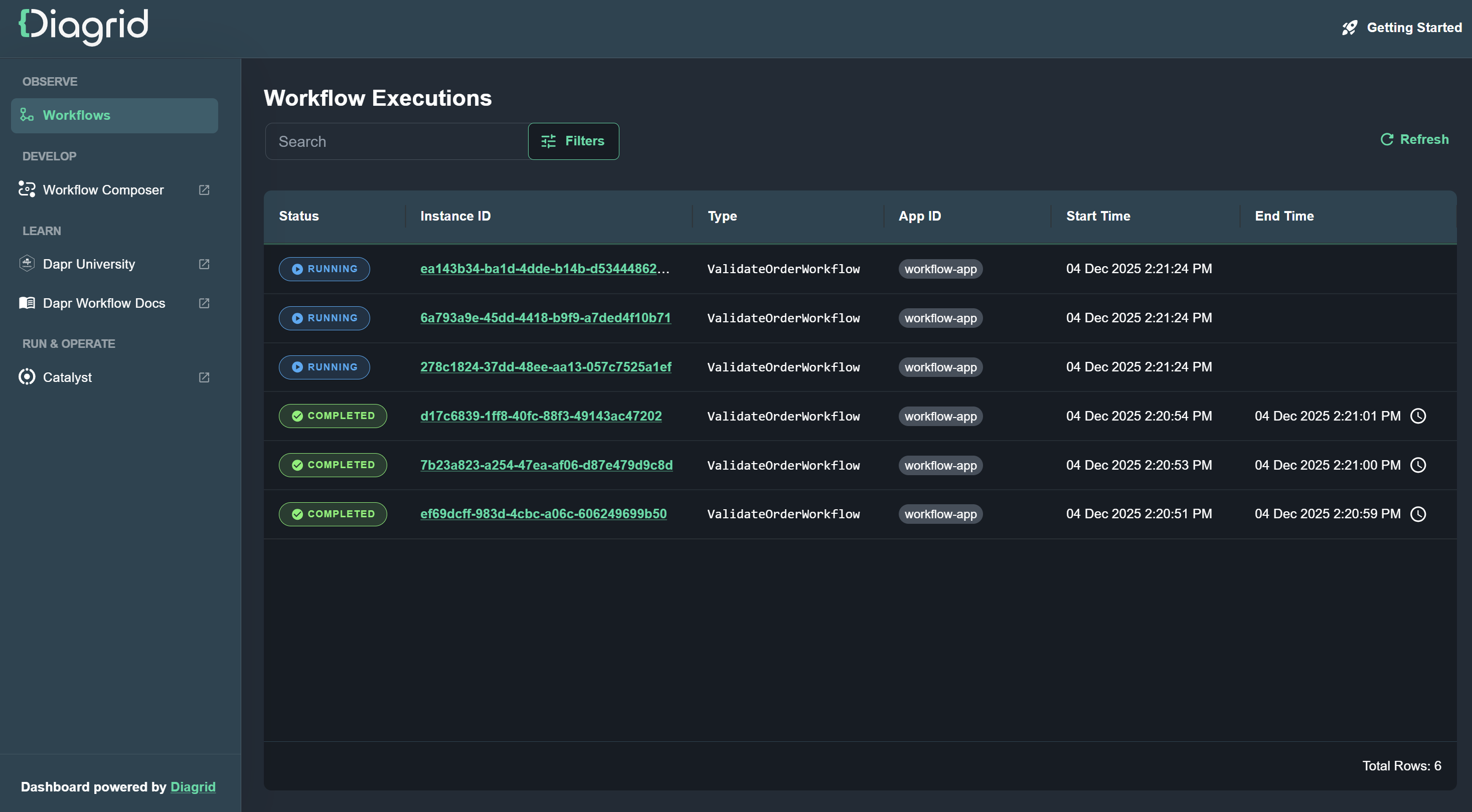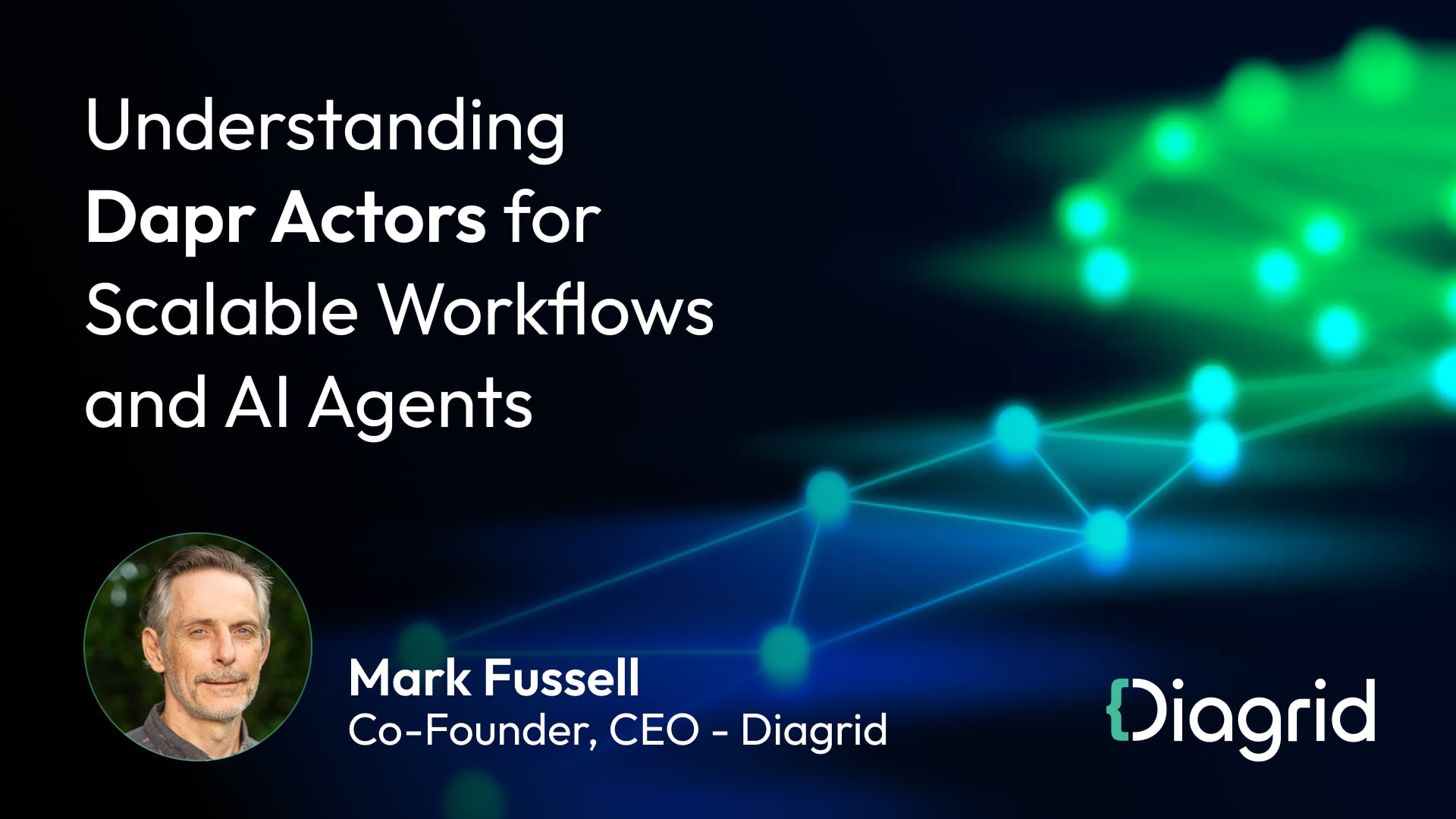We have exciting news to share; the Dapr Project has graduated from the Cloud Native Computing Foundation (CNCF). This is a significant and important event for the project and a huge “Thank you” goes to all those in the community who have worked with us over the years to achieve this incredible milestone. We are truly honored 🙏
Graduation is a defining moment for a CNCF project. A graduated project has reached the highest level of maturity in the CNCF’s project lifecycle and has demonstrated substantial adoption, community support, and a proven track record in production environments. In order to achieve this milestone, Dapr demonstrated strong committee governance, security as a fundamental consideration including external audits, excellent documentation and contributor guidelines, regular stable releases, and a deeply engaged community. Graduation also acknowledges the tens of thousands of organizations today using Dapr to run mission critical applications, as broad adoption is the core of any successful CNCF graduated project. Ongoing development and support for the Dapr project comes from many organizations including Microsoft, Intel, Diagrid, Redhat and more.
Emergence
Dapr was conceived in 2018 while we were working on separate projects at Microsoft, but seeing the same developer challenges we came together with a shared vision that became Dapr. Through our many years of experience working on large scale Azure services as well as talking to hundreds of companies, we deeply understood the needs of developers building enterprise applications using distributed architectures - now referred to as cloud native. As we framed these initial requirements, we also set lofty goals for the project, which still guides it today. In the realm of OSS projects, Dapr is uniquely focused on the needs of application developers with its polyglot language, multi-platform and comprehensive developer APIs that span communication, data and workflow.

Dapr was first released as a set of software patterns in 2019. Immediately we saw a positive response from the developer community, but we weren’t sure whether that meant Dapr would be long-lasting or grow in popularity over time. However, the first area that really took off in the first year was the number of contributions of pluggable component adapters that provide abstractions to underlying infrastructure - such as state stores and message brokers. These Components unlocked architectural evolution, platform independence and ability to move from local development to production without code changes.
Dapr v1.0 was released in Feb 2021. The first stable release included APIs for pub/sub, service invocation, state, secrets, actors, and bindings and came with over 70+ components, setting Dapr on a path for widespread production usage. v1.0 fully embraced deployment to Kubernetes as the preferred hosting platform. Buoyed by the popularity and growth in usage, we wanted to further strengthen developers’ confidence in Dapr as an open source technology with strong governance and ecosystem. To that end, we submitted Dapr to the CNCF and in November 2021 it became the first project to be accepted straight into incubation, bypassing the Sandbox phase.
The next 18 months saw rapid iteration, with a new stable release every 3 months. We listened intently to the community who pushed many contributions, focusing on new APIs, features on existing APIs, but also security, observability and resiliency as cross cutting concerns.
Today Dapr is probably the most secure way to build distributed applications with its focus on zero trust security and in particular its use of SPIFFE for application identity combined with secure mTLS communication.
Dapr has continued to grow in adoption, features and community to the graduation milestone, boasting 11 APIs, 120+ components, 1 million docker hub downloads per month, a Discord community with almost 8,000 members, 24k GitHub stars, 3.7K contributors, 300k doc views per month and ranked 14th out of the 173 CNCF projects.

Sprinkle some workflow on that app
Dapr is all about developer abstractions. Put simply: why reinvent the pattern, when you can simply use a pattern? Dapr also combines patterns into higher abstractions, for example, Dapr actors are the result of combining the state and service invocation APIs to provide a stateful, functions framework.
Equally, why settle for all stateless short, lived, cloud specific runtimes, when you can deploy an actor runtime that can scale to millions of instances that are long-lived? Dapr’s virtual actors have proved to be one of the easiest actor frameworks to use, highly scalable and popular with developers from everything to IoT systems, gaming, to financial services.
When you’ve been developing distributed architectures for a while, you realize it’s no more than combining coordination and data flow pipelines: RAG pipelines, CI/CD pipelines, Event-Driven pipelines, ETL pipelines - you get the point. Workflow engines that perform this coordination (aka orchestration) have been around for decades, but they were mostly focused on declarative DAGs (Directed Acyclic Graph) vs a more developer friendly programmatic implementation. Introduced in the v1.10 release, Dapr workflows, changes the workflow game as Dapr workflows are code based and extremely developer friendly.
The workflows API has been another huge growth driver for Dapr, especially when combined with the other APIs such as pub/sub, state and service invocation. We have countless messages from developers saying how simple it is to develop and test workflows with their local development tool chain and IDE. That’s what we love nothing more; solve hard distributed systems problems to make developers lives easier and let them focus on what really matters.

Diagrid and Dapr
Dapr’s graduation is an amazing accomplishment for the whole community. For us, the creators and maintainers of the Dapr project and founders of Diagrid, this is also very personal. From the first incubation of the idea, to developing and funding the prototype, releasing it as a vendor neutral open source project and then building a community, it has been a journey of ups and downs, excitement and perseverance. This has been a journey that we are extremely proud of and greatly humbled by. We see application developers as under-represented in the cloud native ecosystem where cloud infrastructure and DevOps projects dominate, and we feel their role and needs are equally important. Furthermore, we proposed, started and sponsored AppDeveloperCon as a CNCF co-located event and are very excited to see the CNCF has also “graduated” this event to a full track at KubeCon EU 2025.
Diagrid’s mission is to help application developers successfully navigate the complexity of modern application development today, even as the expectations of their organizations increase. Developers today are drowning; constantly discovering and stitching together a sprawl of libraries and integrating these into a growing number of platforms. Gone are the days of single language teams, especially in the world becoming dominated with Python and AI being integrated into existing Java, .NET and Javascript applications.
To bring Dapr to a larger developer audience, Diagrid created the Catalyst developer platform, powered by open source Dapr. Now in public beta, Catalyst gives developers fully managed Dapr APIs and a developer experience that can be used with any compute, not just Kubernetes.
Diagrid also makes Dapr enterprise ready through a range of support offerings and operational tooling such as Diagrid Conductor to help meet the needs of organizations who depend on Dapr for critical applications in production. Today we provide Dapr enterprise support to organizations from ranging from financial, to health care, manufacturing and IoT.
What next? Community and more innovation
The Dapr project goals continue as the north star for the project. They set its direction for careful consideration of new APIs, selecting features that are relevant to application development and, of course, always listening to the community.
Dapr v1.14 is the current release, shipped in August and delivering a strong package of features and performance improvements including, including a new Jobs API.
The Dapr v1.15 release is a few weeks away and addresses organizations seeking to take advantage of AI. They face a pressing challenge to reliably customize LLMs and integrate AI into their application architecture. v1.15 ships with a new Conversation API enabling developers to rapidly build AI-enhanced applications powered by customized LLMs. This Conversational API not only reduces the complexity of interacting with LLMs but also enables critical security and reliability functions with capabilities like prompt caching and PII data obfuscation. This is an example of how Dapr moves with the demands of application developers, who are now using LLMs side-by-side with procedural code, orchestrated with workflows.
There is so much more we can do as we look towards the future of the project including integrating Dapr even more deeply into developer frameworks such as Spring Boot, .NET Aspire and Express, introducing new APIs for different storage types like blob and document and, as Catalyst demonstrates, take Dapr to all container platforms, not just Kubernetes.
At the heart of the project is the Dapr community on Discord and we could not be more grateful for how this, along with the many contributors, have been crucial in getting Dapr to graduation. Diagrid will continue to support the community by sponsoring the Dapr Meteors program and the twice monthly community calls with code demos and end users showing off amazing Dapr solutions.
Congratulations Dapr!
From its initial release in 2019 to the latest version, Dapr has evolved into a mature and comprehensive distributed application runtime used in production by tens of thousands of companies. As its co-creators, watching Dapr's journey has been an incredible honor, with so many in the community and ecosystem taking our initial vision to heights we could never have imagined back in 2018 . As Dapr continues to push the boundaries of application runtime, we’re committed to ensuring it remains at the forefront of evolving with the cloud native ecosystem with workflows, conversational API for LLMs and so much more.
Five years into the project, Dapr has now graduated the CNCF, which is in itself an incredible accomplishment to line up alongside industry famous projects such as Kubernetes, Istio, LinkedD, KEDA, Prometheus, Argo, Envoy, Cilium, and more. Yet, it feels as if we are just getting started. We are both excited to see what the next five years will bring; what we are certain about is that Dapr will still be going strong and growing then. At Diagrid, we are proud to support and be part of this tremendous community and technology, and we are very excited to see Dapr’s ongoing impact in the CNCF ecosystem. Let’s celebrate!
Let us know what you think!
Meet with the team.
Learn more about Diagrid Catalyst and Diagrid Conductor
Fill out the State of Dapr survey
Join the community
Sign up for the newsletter







.jpg)
